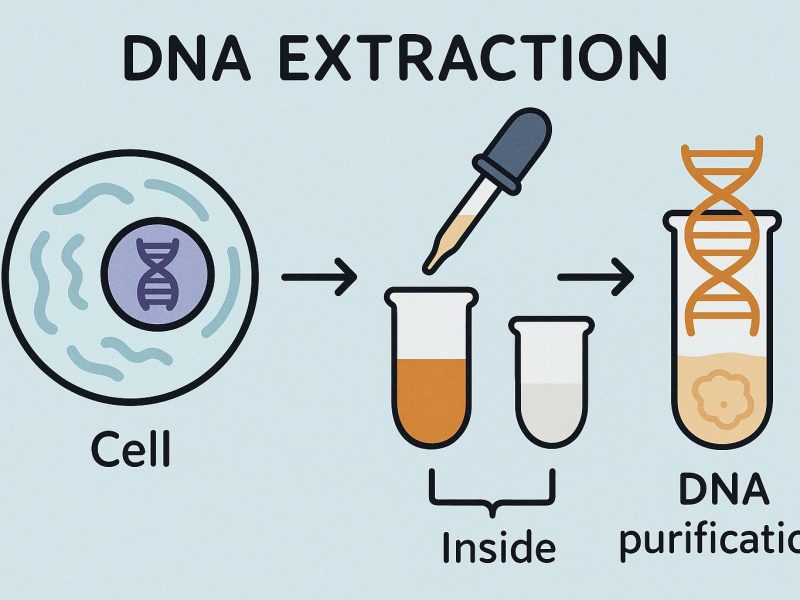Understanding DNA and Human Migration
The study of DNA has revolutionized our understanding of human migration patterns. By examining genetic variations among populations, researchers can trace lineage and ancestral origins, thereby shedding light on how ancient humans moved across the globe. This field, known as population genetics, provides valuable insights into history and prehistory and continues to expand with ongoing scientific advancements.
Genetic Markers and Ancestral Tracing
DNA contains specific markers that are passed from one generation to the next. These markers, known as genetic mutations, occur naturally over time due to environmental factors and random genetic drift. By studying these mutations, scientists can establish genetic linkages between different populations, allowing for the reconstruction of migration routes. For example, the haplogroups, which are groups of similar haplotypes, are often used to trace maternal or paternal lineage. Each haplogroup is associated with particular geographic regions, which helps researchers map out historical connections between different groups of people.
Mitochondrial DNA and Migration
Mitochondrial DNA (mtDNA) is inherited solely from one’s mother and is relatively easy to trace due to its simple structure. Unlike nuclear DNA, it does not undergo recombination, which means the maternal genetic history is preserved across numerous generations. This aspect of mtDNA allows anthropologists to track maternal lineage and connect distant populations to common ancestors. A significant role played by mtDNA analysis has been in understanding the migration patterns of Homo sapiens, particularly the spread of modern humans from Africa. This supports the widely accepted “Out of Africa” theory, which suggests that all modern humans have emerged from a single African population.
Y-Chromosome Insights
The Y-chromosome, passed directly from father to son, provides invaluable insights into paternal lineage. Similar to mtDNA, the Y-chromosome does not undergo recombination, making it a robust tool for tracing historical migrations. Studies of Y-chromosomal markers have illustrated migration routes and the expansion of human populations throughout millennia. These findings have clarified patterns such as movements into Europe, spread across Asia, and the colonization of the Americas. The Y-chromosome analysis has revealed distinct paternal lineages that correlate with well-documented historical migrations and expansions, providing a chronological narrative of human dispersal.
Autosomal DNA and Recent Migrations
In addition to mtDNA and Y-chromosome analyses, researchers utilize autosomal DNA, which makes up the majority of our genetic material. Unlike the maternally or paternally inherited DNA, autosomal DNA undergoes recombination each generation, providing a broader picture of an individual’s ancestry. This type of DNA can help identify more recent migrations and admixture events between populations. Autosomal DNA analysis is critical for understanding the genetic consequences of human activities such as colonization, trade, and cultural exchanges, which have left imprints on the human genome.
By decoding the information within our genes, scientists are able to unravel the intricate web of ancient human migrations, piecing together the journey of our species across vast continents. The continued advancements in genetic research promise to further illuminate the paths our ancestors took, providing a richer understanding of human history. Research into the human genome continues to reveal complexities in our past, elucidating not only the routes taken but also interactions among populations and how these have shaped our contemporary genetic landscape.
The impact of this research is profound, highlighting the interconnectedness of the human race regardless of geographical and cultural differences. Such insights serve as a reminder of the shared heritage that binds people worldwide, emphasizing the importance of genetic diversity, which plays a key role in population resilience and evolution.
Moreover, genetic studies are continually refining our understanding of how ancient populations adapted to new environments, faced challenges such as climate change and resource scarcity, and developed diverse cultures and technologies. These studies provide a window into the adaptive strategies that were successful and those that were not, informing contemporary approaches to similar global challenges.
Ultimately, the interplay between genetics and archaeology, anthropology, and history fosters a multidisciplinary approach that enriches our comprehension of the human past. As the field of population genetics evolves, the potential for uncovering even more surprising revelations increases, promising to reshape our understanding of not only where we came from but also where we might be heading.
For those interested in exploring further insights into the role of DNA in tracing human migration patterns, examining detailed scientific resources and specialized publications can offer a deeper understanding of this fascinating subject. With the ongoing developments in technologies such as genomic sequencing and bioinformatics, the future of genetic research in migration studies looks promising. Each new discovery helps piece together the complex puzzle of human history, contributing to a more nuanced and informed narrative of our shared journey across the globe.



